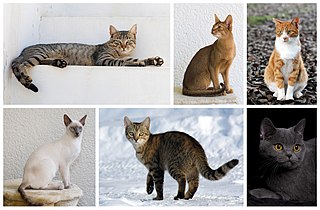 W
WThe cat is a domestic species of small carnivorous mammal. It is the only domesticated species in the family Felidae and is often referred to as the domestic cat to distinguish it from the wild members of the family. A cat can either be a house cat, a farm cat or a feral cat; the latter ranges freely and avoids human contact. Domestic cats are valued by humans for companionship and their ability to kill rodents. About 60 cat breeds are recognized by various cat registries.
 W
WCat bites are bites inflicted upon humans, other cats, and other animals by the domestic cat.. Data from the United States show that cat bites represent between 5-15% of all animal bites inflicted to humans, but it has been argued that this figure could be the consequence of under-reporting as bites made by Felis catus are considered by some to be unimportant. Though uncommon, cat bites can sometimes lead to complications and, very rarely, death.
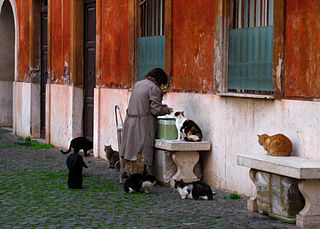 W
WA cat lady is a cultural archetype or stock character, most often depicted as a woman, a middle-aged or elderly spinster, who has many cats. The term may be pejorative, or it may be affectionately embraced.
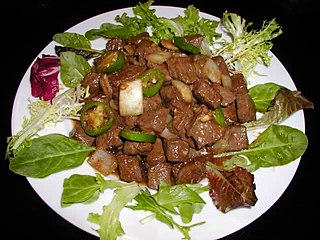 W
WCat meat is meat prepared from domestic cats for human consumption. Some countries eat cat meat regularly, whereas others have only consumed some cat meat in desperation during wartime or poverty.
 W
WCat predation on wildlife is the result of the natural instincts and behavior of both feral and domesticated cats to hunt small prey, including wildlife. Some people view this as a desirable phenomenon, such as in the case of barn cats and other cats kept for the intended purpose of pest control; however, contrary to popular belief, there is no scientific evidence that cats are an effective means of rodent control, and ecologists oppose their use for this purpose because of the disproportionate harm they do to beneficial native wildlife. As an invasive species and superpredator, they do considerable ecological damage.
 W
WCat training is the process of modifying a domestic cat's behavior for entertainment or companionship purposes. Training is commonly used to reduce unwanted or problematic behaviors in domestic cats, to enhance interactions between humans and pet cats, and to allow them to coexist comfortably. There are various methods for training cats which employ different balances between reward and punishment.
 W
WThe Bengal cat is a domesticated cat breed created from hybrids of domestic cats, especially the spotted Egyptian Mau, with the Asian leopard cat. The breed name comes from the leopard cat's taxonomic name.
 W
WA cattery is where cats are commercially housed. Catteries come in two varieties – boarding catteries and breeding catteries.
 W
WCrumbs and Whiskers is a small business which operates cat cafés that foster rescue cats and offer cafe amenities, in Washington, D.C. and Los Angeles, California. Crumbs & Whiskers partners with rescues who save cats at risk of euthanasia in high kill shelters and cats facing homelessness on the streets.
 W
WA feral cat or a stray cat is an un-owned domestic cat that lives outdoors and avoids human contact: it does not allow itself to be handled or touched, and usually remains hidden from humans. Feral cats may breed over dozens of generations and become an aggressive local apex predator in urban, savannah and bushland environments. Some feral cats may become more comfortable with people who regularly feed them, but even with long-term attempts at socialization, they usually remain aloof and are most active after dusk.
 W
WCat coat genetics determine the coloration, pattern, length, and texture of feline fur. Understanding how is challenging because many genes are involved. The variations among cat coats are physical properties and should not be confused with cat breeds. A cat may display the coat of a certain breed without actually being that breed. For example, a Siberian could wear point coloration, the stereotypical coat of a Siamese.
 W
WThe Hermitage cats are a group of cats residing in the Hermitage Museum in Saint Petersburg, Russia. The museum has a press secretary dedicated to the cats, and three people act as caretakers. The cats live in the museum's basement, and they also appear on the embankment and on the square during the summer. In previous eras they roamed throughout the museum galleries.
 W
WThe Houtong Cat Village or Houdong Cat Village is a village in Ruifang District, New Taipei, Taiwan known for its cat population.
 W
WInduced ovulation is when a female animal ovulates due to an externally-derived stimulus during, or just prior to, mating, rather than ovulating cyclically or spontaneously. Stimuli causing induced ovulation include the physical act of coitus or mechanical stimulation simulating this, sperm and pheromones.
 W
WA kitten is a juvenile cat. After being born, kittens display primary altriciality and are totally dependent on their mother for survival. They do not normally open their eyes until after seven to ten days. After about two weeks, kittens quickly develop and begin to explore the world outside the nest. After a further three to four weeks, they begin to eat solid food and grow baby teeth. Domestic kittens are highly social animals and usually enjoy human companionship.
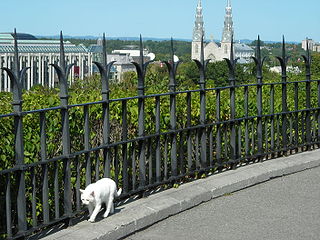 W
WThe Parliament Hill cat colony was a clowder of stray cats living on Parliament Hill in Ottawa, Ontario, Canada, in a cat sanctuary set aside for them. The care of the cats and maintenance of the sanctuary was carried out by volunteers, and the effort was funded by donations. The colony was closed in January 2013 after the remaining cats were adopted into homes.
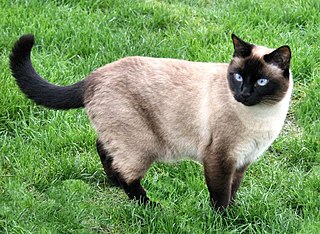 W
WPoint coloration refers to animal coat coloration with a pale body and relatively darker extremities, i.e. the face, ears, feet, tail, and scrotum. It is most recognized as the coloration of Siamese and related breeds of cat, but can be found in dogs, rabbits, rats, sheep, guinea pigs and horses as well.
 W
WPussy is used as a noun, an adjective, and—in rare instances—a verb in the English language. It has several meanings, as slang, as euphemism, and as vulgarity. Most common as a noun, it means "cat", as well as "coward or weakling ", and also "the human vulva or vagina". Because of its multiple senses including both innocent and vulgar connotations, pussy is often the subject of double entendre. It is less commonly used as a verb, a form of synecdoche, meaning "sexual intercourse with a woman".
 W
WToe tufts are commonly found on cats with medium to long coats. Clumps of fur that stick out at least 1–2 cm beyond the paw pad can be considered tufts. In addition to soft paw pads, toe tufts help a cat to silently stalk its prey by muffling excess noise. However, outdoor cats tend to lose their toe tufts due to excessive abrasion on the rougher outdoor surfaces. This is in distinct contrast to indoor cats who spend most of their time walking on carpet or smooth floors.